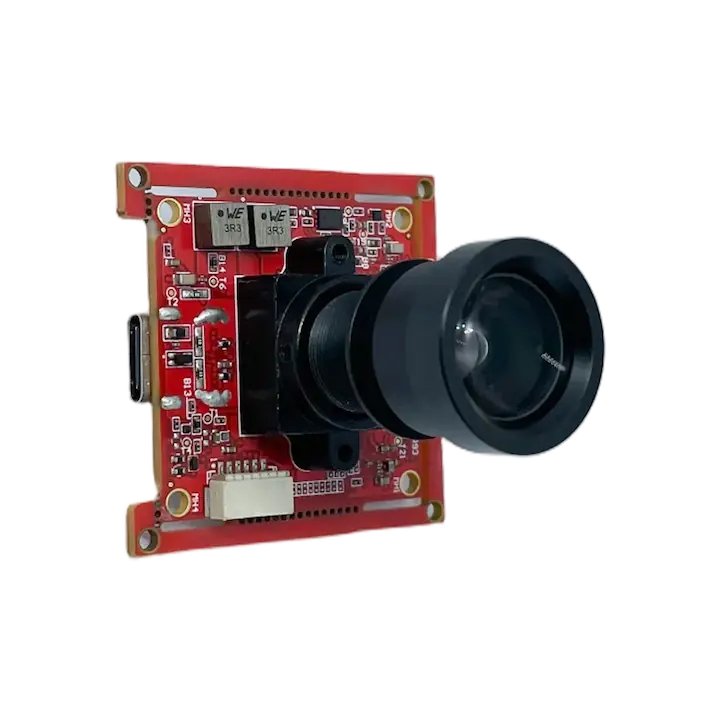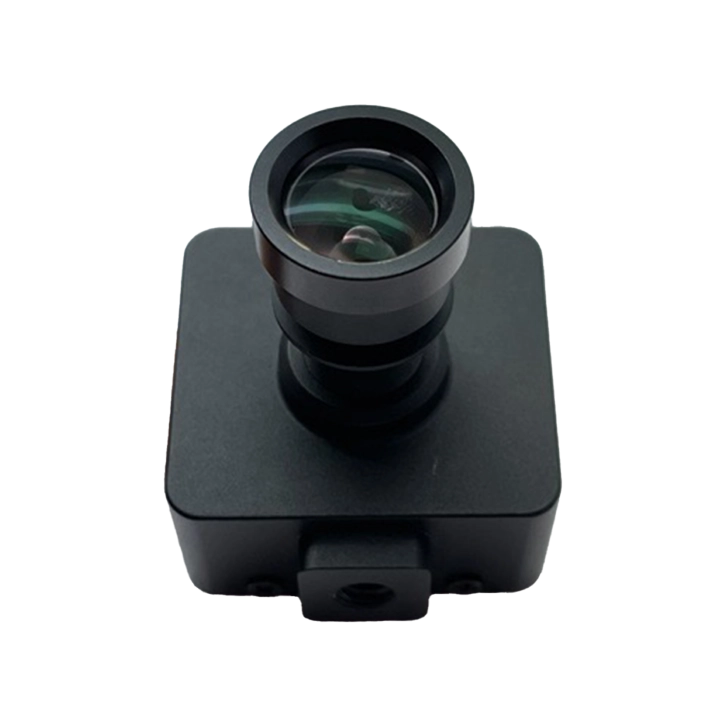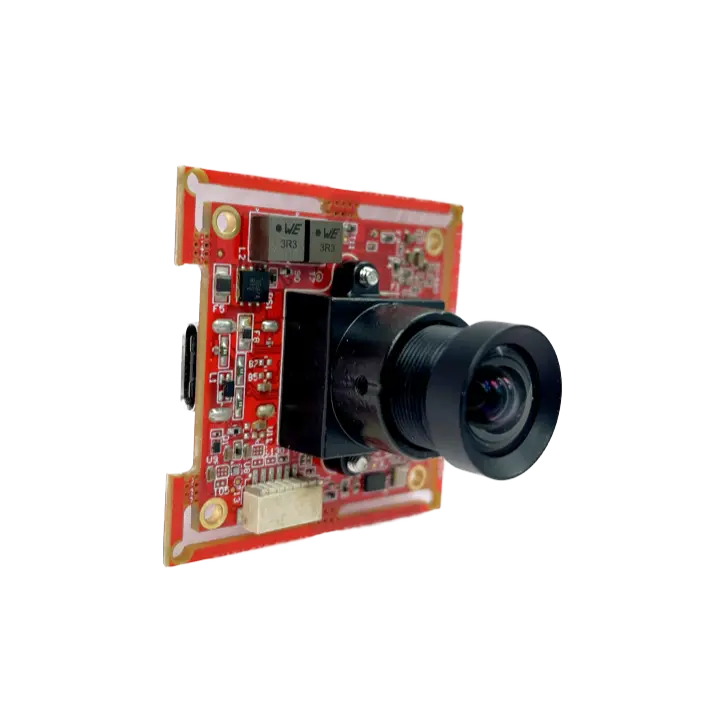USB 2.0 vs 3.0: Why Interface Choice Matters for 4K USB Camera
- Vadzo Imaging

- Jun 24, 2024
- 6 min read
Updated: Sep 25
When building embedded vision systems, the choice of camera interface plays a critical role in determining performance, reliability, and scalability. One of the most debated interface comparisons is USB 2.0 vs USB 3.0, especially for high-resolution imaging systems that rely on 4K cameras

In this blog, we’ll explore how these two USB standards impact embedded camera performance—and why USB 3.0 is often the preferred choice for modern 4K vision applications.
USB 2.0 Limitations in 4K USB Camera Applications
USB 2.0 has a maximum theoretical signaling rate of 480 Mbps, which is seldom reached during real-world use because the protocol includes overhead and host controller throughput limitations, limiting it to 280-320 Mbps in the real world. This is not enough to stream 4K USB camera signals in real-time, which will need data rates of 1 Gbps and more or less, depending on the frame rate, used pixel format, and compression codes.
In addition, USB 2.0 supplies up to 500 mA at 5V and cannot support high-power image sensors or active camera modules. USB 2.0 causes problems of latency and buffering in embedded systems that require high-resolution, uncompressed video data, such as industrial inspection or medical equipment diagnostics, and is thus inappropriate in modern 4K imaging pipes.
USB 3.0 Limitations in 4K USB Camera Applications
USB 3.0 (SuperSpeed USB) adds a 5 Gbps signaling rate over a dual-bus infrastructure with increased bandwidth and the ability to communicate concurrently with USB 2.0, with the enhancement of dual-bus. Practically, when data transmission is desired, usable throughput is about 3.2 4.0 Gbps, which is optimal to interface with 4K USB camera capable of 30-60 fps at RAW, YUV, MJPEG formats.
Moreover, USB 3.0 provides higher current delivery of up to 900 mA, thus accommodating power-intensive camera processes without external supplies, which is very vital in embedded devices with limited space. USB 3.0 has lower latency and supports bulk transfer mode as well as having strong error handling capabilities: it is thus the preferred interface to use with real-time vision systems that need to capture frames quickly and perform edge AI that needs little CPU overhead.
Understanding the Basics: USB 2.0 vs USB 3.0
Before diving into camera-specific implications, let’s review the technical differences:
Feature | USB 2.0 | USB 3.0 |
|---|---|---|
Max Data Rate | 480 Mbps (High-Speed) | 5 Gbps (SuperSpeed) |
Power Output | 500 mA | Up to 900 mA |
Connector Type | USB-A, USB-B, Mini/Micro | USB-A, USB-B, Micro-B 3.0 |
Backward Compatible | Yes | Yes |
Ideal Use Cases | Basic peripherals | High-performance peripherals like external drives, 4K USB camera, and industrial sensors |
How to Choose the Right USB Standard for Your Embedded Vision Application
When designing an embedded vision system, selecting the appropriate USB standard is crucial for ensuring optimal compatibility with the host CPU or SoC. USB camera modules that comply with the UVC (USB Video Class) protocol offer plug-and-play connectivity, eliminating the need for proprietary drivers. This simplifies system integration and significantly reduces development time and costs.
For applications involving 4K USB camera modules, bandwidth becomes a critical factor. USB 3.0 or higher is recommended to support high-resolution video streams at real-time frame rates without compression artifacts. These standards also ensure low CPU overhead, enabling the host processor to focus on other tasks such as edge AI inference or image preprocessing.
Additionally, UVC-compliant cameras are typically compact and power-efficient, making them ideal for space-constrained designs like medical devices, industrial automation, and smart kiosks—where delivering high-resolution 4K video in a small form factor is essential.
Where USB 2.0 vs USB 3.0 Makes a Difference in 4K Camera Applications
A 4K USB camera isn’t just about more pixels—it’s about extracting richer, more actionable data from every frame. However, the performance of such high-resolution imaging systems is tightly linked to the choice of USB interface. While USB 2.0 may suffice for lower frame rate or compressed video use cases, USB 3.0 is essential for transmitting uncompressed 4K video streams with minimal latency and higher throughput.
Machine Vision & Quality Control
High-resolution tasks such as defect detection, label verification, and PCB inspection benefit significantly from 4K imaging. These applications often demand uncompressed video at higher frame rates—making USB 3.0 the ideal interface, as USB 2.0 bandwidth may introduce bottlenecks.
Smart Cities & Public Infrastructure
For scenarios like license plate recognition and crowd monitoring, a 4K USB camera provides a wide field-of-view and zoom-in capabilities. When real-time 4K streaming is required—especially over longer cables or in weatherproof housings—USB 3.0 ensures data integrity and speed, while USB 2.0 is more suited to low-bandwidth backup streams or legacy systems.
Medical Imaging & Life Sciences
Clinical diagnostics, dermatological assessments, and microscopy often rely on the color fidelity and clarity of 4K USB camera. Cameras like the Falcon-415CRS with Sony STARVIS sensors deliver superior low-light performance. For such medical-grade imaging, USB 3.0 is preferred due to its support for full-resolution, high-fidelity video streams, whereas USB 2.0 might compromise performance in high-detail imaging.
AI-Based Vision Systems
AI workloads—such as facial recognition, object detection, or gesture tracking—perform better when fed high-resolution 4K inputs. Models like the Falcon-830CRS, powered by the AR0830 sensor, enable smart retail, edge analytics, and security systems. These AI-driven applications often demand the low-latency and high-bandwidth advantages of USB 3.0, with USB 2.0 reserved for simpler control signals or power delivery.
Final Thoughts
In the design of embedded visions systems, camera resolution versus the interface bandwidth has become an issue. Although USB 2.0 is still applicable in small, low-throughput and imaging scenarios, it does not provide enough bandwidth nowadays to support high-resolution imaging workflows. In comparison, USB 3.0 is specially designed to support 4K USB camera, supporting uncompressed video making its way through and speeding up the frames and real-time generation of AI on the edge.
Choosing the correct USB standard with compatible CPU and sensor capabilities and responsiveness requirements, engineers have a chance to design smarter, faster, and more efficient vision systems in almost any industry: quality inspection, medical imaging, smart city, or retail analytics.
From proof of concept to high-volume manufacturing, knowledge of how USB interface translates to 4K imaging on embedded cameras is important to realizing full performance of your embedded camera system.
Enhance Your Vision: Discover Our Diverse Camera Range!
Frequently Asked Questions (FAQ)
1. What is a 4K USB camera, and how does it work?
A 4K USB camera is a high-resolution camera capable of capturing Ultra HD (3840×2160) video via a standard USB interface. It works by streaming uncompressed or compressed video data directly to a host device (PC, embedded board, or Android device) without requiring specialized capture hardware.
2. How does a 4K USB camera differ from a regular USB camera?
The key differences are resolution and image detail. While regular USB cameras typically capture at 720p or 1080p, a 4K USB camera delivers four times the pixel count, enabling sharper details, better cropping flexibility, and improved clarity in high-precision applications like machine vision, medical imaging, or conferencing.
3. Can I use a 4K USB camera with Android smartphones and tablets?
Yes — if the Android device supports USB OTG (On-The-Go) and UVC (USB Video Class). Many modern Android smartphones and tablets can use a 4K USB camera through a USB-C to USB adapter without extra drivers.
4. How to connect a 4K USB camera to a laptop or PC?
Simply plug the camera into a USB 3.0 port for maximum bandwidth. Most 4K USB cameras are UVC-compliant, meaning they’re recognized instantly by Windows, Linux, or macOS without needing additional drivers.
5. What are the best 4K USB cameras for video conferencing?
Look for models with autofocus, HDR support, wide dynamic range, and optimized field of view (FoV). Cameras like Vadzo’s Falcon and Bolt series provide high-resolution imaging ideal for conferencing, education, and streaming.
6. Are 4K USB cameras good for live streaming and webinars?
Yes. They deliver professional-grade video quality that’s compatible with platforms like Zoom, Microsoft Teams, OBS, and YouTube Live. The high resolution also supports cropping and digital zoom without losing image clarity.
7. How much bandwidth does a 4K USB camera require?
4K video at 30 fps (YUY2 or MJPEG) requires a USB 3.0 interface to avoid frame drops. Typically, around 3–5 Gbps is needed for uncompressed video. Compression (like MJPEG or H.264) reduces bandwidth needs significantly.
8. Does a 4K USB camera work without installing drivers?
Yes — if it’s UVC-compliant. Most modern 4K USB cameras are plug-and-play and work across operating systems without vendor-specific drivers.
9. How to improve video quality on a 4K USB camera?
Use proper lighting, ensure you’re on a USB 3.0 port, adjust exposure and white balance settings, and use recommended software that supports full 4K output.
10. Can a 4K USB camera work in low-light conditions?
Yes, provided it uses a sensor with high sensitivity, back-side illumination (BSI), or HDR. Some advanced 4K cameras include noise reduction and wide dynamic range for improved low-light performance.





